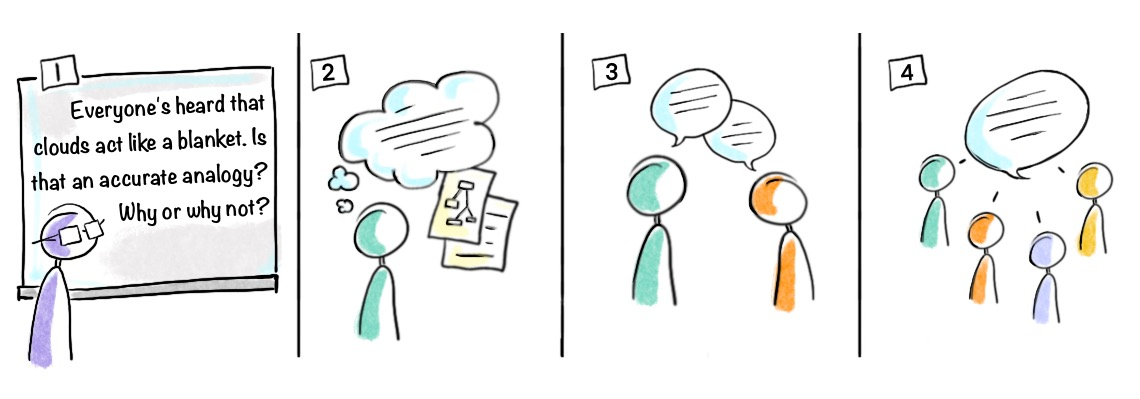
Credit: © Penn State is licensed under CC BY-NC-SA 4.0
The cooperative learning strategy Think-Pair-Share was designed to increase students’ critical thinking skills and encourage engagement with peers and lesson content. Think-Pair-Share achieves this by engaging students in a social and constructivist exploration of course concepts. To implement the Think-Pair-Share model, an instructor first poses a question or challenge to the class. Learners then have several minutes to work independently to gather their thoughts or to identify a solution (Think). After several minutes have passed, learners share possible solutions with a peer and the pair then works together to hone their idea or solution (Pair). The pairs are then asked to share their ideas or solutions with the rest of the class (Share). If time allows, further whole-class discussion can continue and/or the instructor can clarify any misconceptions.
A variation of Think-Pair-Share is Think-Pair-Square, where a team discussion among two pairs replaces the Share portion of the activity.
The Think-Pair-Share strategy works best when students can interact with one another in real-time and space, but it can be done asynchronously as well. Some asynchronous ideas include:
- Share a Google Doc, Google Jamboard, or online collaborative whiteboard and ask students to spend 3 minutes considering the question/challenge and then post their response to the collaborative board in 30 – 50 words. Assign a few students each week to write summaries to share with the class.
- Share the same directions but have people post in small group discussion boards via text or with 1-minute video recordings. Assign a few students each week to write summaries to share with the class.
In addition to promoting engagement with fellow students and with the content, this activity can help instructors identify weak spots in students' understanding.